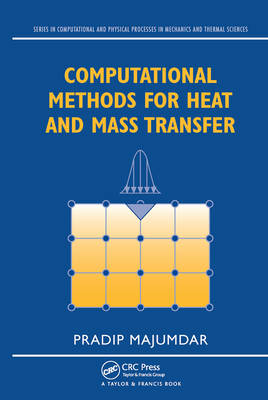
- Retrait gratuit dans votre magasin Club
- 7.000.000 titres dans notre catalogue
- Payer en toute sécurité
- Toujours un magasin près de chez vous
- Retrait gratuit dans votre magasin Club
- 7.000.000 titres dans notre catalogue
- Payer en toute sécurité
- Toujours un magasin près de chez vous
Description
The advent of high-speed computers has encouraged a growing demand for newly graduated engineers to possess the basic skills of computational methods for heat and mass transfer and fluid dynamics. Computational fluid dynamics and heat transfer, as well as finite element codes, are standard tools in the computer-aided design and analysis of processes and products involving coupled transport and multi-physic phenomena. This textbook introduces the fundamentals of two important computational techniques for solving heat and mass transfer and fluid flow problems: finite difference and finite element methods.
The objective of the book is to help the students thoroughly understand the basic concepts and procedures of fluid dynamics, heat and mass transfer and implement computational methodology into a computer code and solve more complex problems on their own. Theory and practice are combined in a simple and straightforward manner. Classic problems in heat transfer, mass transfer, and fluid flows are solved and illustrated through step-by-step derivations and numerous figures. End-of-chapter problems are provided at the end of every chapter for extra practice and homework assignments. The book is divided into three parts: Part One contains a review of basic equations of heat transfer, mass transfer and fluid dynamics; concepts of numerical approximations and errors; numerical solution techniques for systems of linear algebraic equations; and numerical integrations and quadrature formulas. (The last two topics are included primarily for students who have had no prior course on numerical analysis). Part Two introduces the finite difference/control volume method. Part Three presents the finite element method. As an introductory text, this book is appropriate for senior undergraduate and first-year graduate level courses. Students taking independent study can use the text as a comprehensive reference guide. Others who will find it a useful resource incluSpécifications
Parties prenantes
- Auteur(s) :
- Editeur:
Contenu
- Nombre de pages :
- 744
- Langue:
- Anglais
- Collection :
Caractéristiques
- EAN:
- 9780367454043
- Date de parution :
- 02-12-19
- Format:
- Livre broché
- Format numérique:
- Trade paperback (VS)
- Dimensions :
- 152 mm x 229 mm
- Poids :
- 970 g







